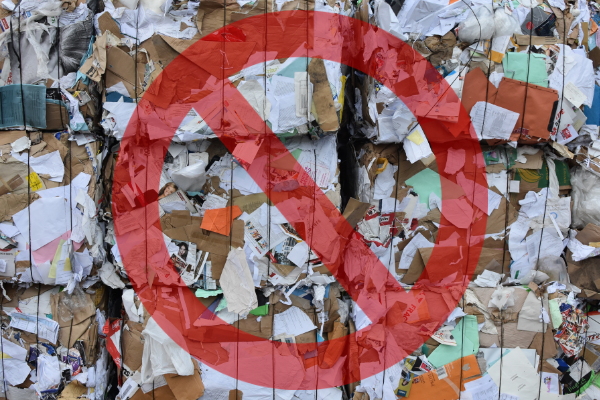How to survive the China Ban: Identifying the problem

Under a year ago, China passed its now-infamous National Sword policy, banning the import of 32 categories of solid waste and setting a 0.5% contamination standard on all accepted recyclables.
Since then, a lot has changed.

With China out, recyclers are struggling to find new markets. They’ve had varying degrees of success. Malaysia and Thailand, for example, were picking up the slack earlier this year. Now, they’re implementing bans of their own to deal with the massive influx of materials.
The impact has been widespread. Recovery facilities across North America and beyond have their hands tied. Some are stockpiling baled recyclables, waiting for market conditions to improve. States have had to issue disposal waivers to deal with a dangerous backflow of materials in some locations, sending recyclables to the landfill.
A recent Science Advances study looked at the impact the China Ban will have on the global plastics market. They estimate that up to 111 million metric tons of plastic scrap will be displaced by 2030. Which begs the question, where will it all go?
The rise of local
recycling
Here’s the thing: right now, this all sounds very bleak (sorry about that). But it’s not. The fact is, the China Ban is a blessing in disguise. It’s forcing us to confront the flaws in our recycling system. Because of China, we never had to, but now we do. And it’s going to make us better recyclers as a result.
In fact, it’s already happening.
In Ohio, for example, Pratt Industries is building a factory that will manufacture recycled corrugated boxes. By creating domestic markets, we can process our own recyclables and add new jobs, benefiting local economies. Building this infrastructure takes time, though. Up to six years, according to some experts.
So, what can we do in the meantime?
A back to basics approach
The China Ban has exposed some serious weaknesses in the way we recycle.
Recently, Waste Dive contacted policymakers in every U.S. state and most of them said the same thing: we need to address the contamination problem. That’s why governments at every level are taking a back-to-basics approach to recycling. The hope is that by simplifying recycling and standardizing what’s accepted, municipalities will be able to turn out a better, more salable product.
But cities need support. Thankfully, there are plenty of tools out there designed to help governments of all sizes better communicate recycling best practices to residents. In our next installment, we’ll look at some of them and see whether they might be a fit for you.
If you’re interested in learning more about us, feel free to click the button below, and we’ll show you how we’re helping communities of all sizes deal with today’s shifting recycling landscape.
About us
We save people time and energy with intuitive digital tools that make recycling easy. Our goal is to be in every city, on every device, empowering communities to work together to waste less and recycle more. We’re recycling simplified.